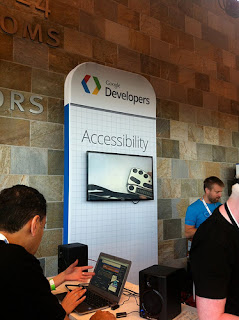Editorial guest blog by Philip J Reed, on behalf of Westwood College.
Too many businesses make the mistake of dismissing web accessibility as irrelevant, but the assumption that accessibility issues concern only a small segment of would-be customers is a potentially profit-damaging misstep.
Taking web accessibility seriously can save your business from major problems, some that possibly haven’t even occurred to you. What’s more, it can save you time and money, two things any business owner could always use more of. After all, by designing an adequately accessible website, you will not have to make a special effort to provide materials to disabled clients or customers in different formats, such as in physical large-print, or Braille.
Additionally, accessible websites make it easier for those clients or customers to place their order with you. While you may have been happy to provide those individuals with special service, the fact may be that they don’t ask you for that opportunity; they may simply find your interface unusable, and begin to look elsewhere. You don’t want that to happen, and here are five additional reasons your business should take web accessibility seriously.
- Customer Loyalty. If any user, disabled or not, finds your site slow, confusing or hard to navigate, you’ve just lost a potential customer. Web users have millions of sites to choose from, and they aren’t willing to find out if yours is worth the wait while your high-bandwidth images struggle to load. Even worse, if your site only functions well on one browser, you may have just lost a large share of web users, consumers who will make the switch to a competitor rather than deal with an inferior experience.
- Credibility. By ensuring your site accommodates and satisfies users of all levels of ability and access you’ll establish and build the one currency that means the most in the business world— credibility. If a consumer knows they can come to your site and easily navigate pages, forms and links, they’re much more likely to return, refer others, and speak well of your brand in general.
- Staying Ahead. In the digital world, being even one step behind current technology makes you a dinosaur. Working to create the most accessible site will ensure that you stay at the forefront of your industry, and empower your consumer to feel in control of their web experience. If re-coding your forms or updating your graphics seems daunting, remember that programs at local or online IT schools can easily get you up to speed on any tech tricks necessary to avoid accessibility issues and revamp an outdated site format.
- Progress. Web accessibility can be a moving target, but the consistent self-evaluation necessary to keep your site accessible for any user will benefit your business as a whole. Business awareness and accommodation of individual needs and desires was the top concern for 83% of consumers in a 2010 Experian poll, and you’ll be a go-to guy for these customers if you keep accessibility at the top of the list of priorities.
- Lawsuits. Web accessibility traditionally refers to site accommodation of users with visual, cognitive, auditory or physical disabilities. Sites that fail to feature alternative descriptions for images, transcription for videos, and the appropriate HTML code that makes the site usable by keyboard-only, screen reader and other users of adaptive technology, set themselves up to not only alienate disabled consumers, but also to invoke lawsuits for failure to comply with accessibility standards. Check state and national law and policy to avoid leaving your site exposed to legal action. In the U.S., if your website is even partially federally funded, it must comply with Section 508, so make sure you’re well familiar with it, and in full compliance.
As time goes on, web accessibility will only become more of an urgent issue. If you build accessibility into your plan from the beginning, you won’t always have to be playing catch up. And if you’re playing catch up, well, make sure you get to work!
For further reading and information, please see this overview assembled by W3C.


